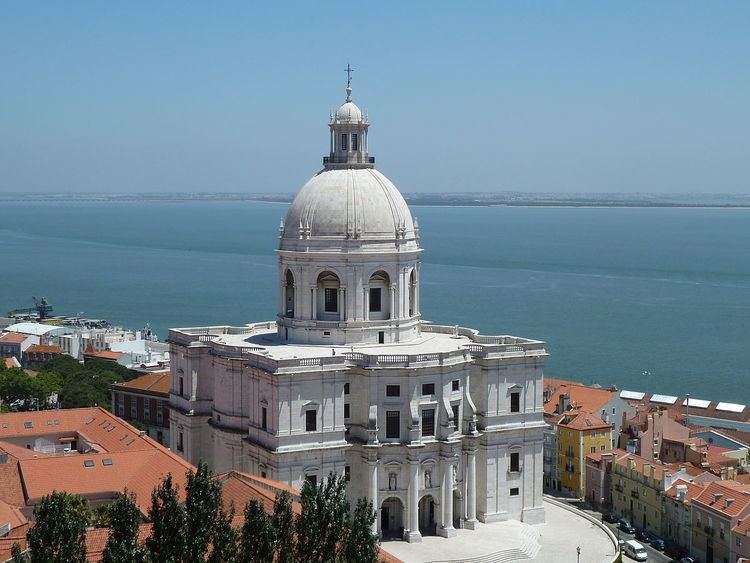Affiliation Roman Catholic Region Lisboa Region Phone +351 21 885 4820 | Rite Latin Rite Opened 1966 | |
 | ||
Address Campo de Santa Clara, 1100-471 Lisboa, Portugal Similar Monastery of São Vicente d, São Jorge Castle, Lisbon Cathedral, Estrela Basilica, Feira da Ladra | ||
The Church of Santa Engrácia (Portuguese: Igreja de Santa Engrácia, [iˈɣɾeʒɐ ðɨ ˈsɐ̃tɐ ẽˈɡɾasiɐ]) is a 17th-century monument in Lisbon, Portugal. Originally a church, in the 20th century it was converted into the National Pantheon (Panteão Nacional, [pɐ̃tiˈɐ̃w̃ nɐsiuˈnaɫ]), in which important Portuguese personalities are buried. It is located in the Alfama neighborhood, close to another important Lisbon monument, the Monastery of São Vicente de Fora.
Contents
History
The current building of the Church of Santa Engrácia substituted previous churches dedicated to a martyr of the city of Braga, Saint Engrácia. The first church dedicated to the Saint was sponsored by Infanta Maria of Portugal, Duchess of Viseu, daughter of King Manuel I, around 1568. In 1681, construction of the current church began after previous structures collapsed. The design was the work of João Antunes, royal architect and one of the most important baroque architects of Portugal.
Construction proceeded from 1682 through 1712, when the architect died. King John V lost interest in the project, concentrating his resources in the gigantic Convent of Mafra. The church was not completed until the 20th century, so that Obras de Santa Engrácia (literally Saint Engrácia's works) has become a Portuguese synonym for an endless construction project. A dome was added, and the church was reinaugurated in 1966.
Architecture
João Antunes prepared an ingenious design for Santa Engrácia, never before attempted in Portugal. The church has a centralised floorplan, with a Greek cross shape. On each corner there is a square tower (the pinnacles were never completed), and the façades are ondulated like in the baroque designs of Borromini. The main façade has an entrance hall (galilee) and three niches with statues. The entrance to the church is done through a beautiful baroque portal with the coat-of-arms of Portugal held by two angels. The Church has a high central dome which was completed only in the 20th century.
The harmonious interior of the church is dominated by the curved spaces of the central crossing and naves. The floor and walls are decorated with baroque, polychromed patterns of marble. The magnificent 18th-century baroque organ was brought from Lisbon Cathedral.
National Pantheon
In 1916, during the First Portuguese Republic, the Church of Santa Engrácia was converted into a National Pantheon. It was completed only in 1966, during the government of the Dictator António de Oliveira Salazar.
The personalities entombed here include the Presidents of the Republic Manuel de Arriaga, Teófilo Braga, Sidónio Pais and Óscar Carmona, Presidential candidate Humberto Delgado, writers João de Deus, Almeida Garrett, Guerra Junqueiro, Aquilino Ribeiro and Sophia de Mello Breyner Andresen, fado singer Amália Rodrigues, and footballer Eusébio. There are cenotaphs to Luís de Camões, Pedro Álvares Cabral, Afonso de Albuquerque, Nuno Álvares Pereira, Vasco da Gama and Henry the Navigator.
